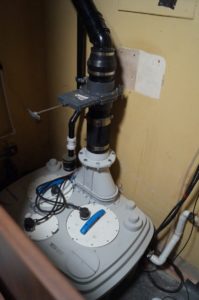 The Opera House is a historic building on Quay Street in Manchester. Opened in 1912, the listed building was originally known as the New Theatre and has a fantastic history of shows, ballets and musicals including the famous premiere of West Side Story in 1958. Over the years the building has had a number of owners and uses have included a cinema and a Bingo Hall!
The Opera House is a historic building on Quay Street in Manchester. Opened in 1912, the listed building was originally known as the New Theatre and has a fantastic history of shows, ballets and musicals including the famous premiere of West Side Story in 1958. Over the years the building has had a number of owners and uses have included a cinema and a Bingo Hall!
The Palace Theatre Trust bought the building in 1984; reinstating it as The Opera House and hosting live theatre. Today it is owned by the renowned Ambassador Theatre Group (ATG) which has venues in the West End, Scotland and on the South Coast of England, as well as theatres in Germany and the USA. The Opera House hosts a variety of live acts from bands and comedians to full theatrical productions.
The female performers’ dressing rooms and toilets underwent a much needed renovation back in 2017. Located in the basement and therefore below the mains drains, the WC’s rely on macerators to pump away the waste. Despite on-going blockage problems prior to the refurbishment the existing units were retained – leading to frequent closure of the toilets. With the next facilities four floors up – and without the important access to back of stage – this was causing significant issues for the artists. In fact, the maintenance team was beginning to get complaints from the management teams of the performers; jeopardising future bookings.
Steve Clarkson, Maintenance Manager at the site, recognised the need for a more robust solution and contacted Landers, a commercial refurbishment business that had worked on the renovation of ATG venue, The Palace Theatre in Manchester.
 “The team at Landers suggested contacting Saniflo direct to ask for some advice and in fact a Saniflo representative came and carried out a site survey. He discovered the problem was that items were being flushed away that should be placed in the bin including hairclips, fascinators and underwear. Domestic macerators are not designed to handle such objects.”
“The team at Landers suggested contacting Saniflo direct to ask for some advice and in fact a Saniflo representative came and carried out a site survey. He discovered the problem was that items were being flushed away that should be placed in the bin including hairclips, fascinators and underwear. Domestic macerators are not designed to handle such objects.”
A larger commercial unit was recommended and duly installed. The Sanicubic 2 XL features a vortex system that eliminates the need for blades and can handle larger items without affecting performance. The unit features twin pumps, so in the event of one failing the other will assume responsibility for the whole workload until a fix is found. It also has twin alarms that connect to the Buildings Management System for early warning of problems and for remote checking of the unit at all times. A 4” isolation valve was specified for ease of servicing along with a carbon filter to neutralise odours and gaseous contaminates.
The Sanicubic 2 XL was installed by Lightwater Mechanical of Sheffield behind a de-mountable panel in a WC cubicle to enable easy access to the unit for maintenance and servicing. Waste water is pumped up two levels to a mezzanine floor where it is plumbed into existing pipework that uses gravity drainage to discharge the waste to mains drains at street level.
The new unit is working so successfully that since its installation we have had our longest ever period without malfunctioning toilets. Steve is delighted and relieved;
“After 18 months of grief I can scarcely believe that the issue is now resolved. It is a lesson learned by the wider ATG Group. Specifying the right product is imperative. It has also opened our eyes about the possibilities of such products. Across the group of 46 venues there is space that is under used and some of these areas could be converted now we understand the scope and range of Saniflo products. In future, our course of action will be to contact the experts at Saniflo direct. They are so helpful and knowledgeable. I can honestly say this solution has protected our business and the same mistake won’t be made twice.”

